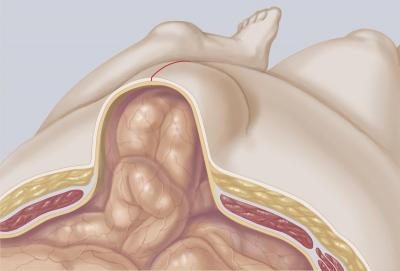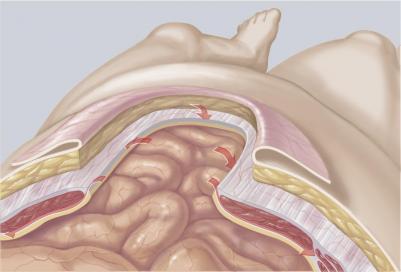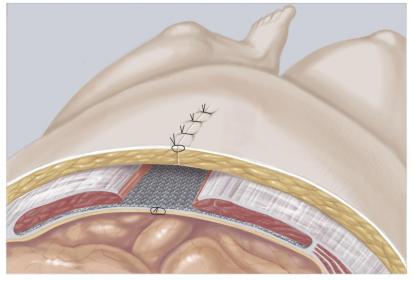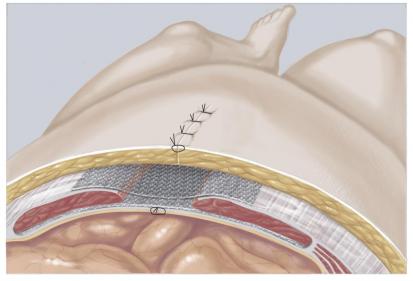3.2.3 Sublay-Mesh
The sublay mesh technique is an open surgical procedure for large incisional hernias. With this technique a skin incision is made directly above the protruding hernial sac [Fig. 32] and the scar is cut out. Then the hernial sac is opened, any adhesions in the abdominal cavity are removed and the hernial sac is repositioned in the abdominal cavity. Next the hernial sac is cut off at the edge of the hernia and removed [Fig. 33]. After that, the rectus sheath, the structure in which is situated the rectus abdominis muscle, is opened on both sides and the posterior layer is sutured at the midline. The synthetic mesh is then placed over the posterior layer of the rectus sheath, behind the rectus abdominis muscle, and fixed with a few sutures or fibrin glue [Fig. 34]. If the defect remaining between the two rectus abdominis muscles is still too big, a second mesh can be placed over the anterior layer of the rectus sheath and fixed with sutures [Fig. 35].
The sublay mesh technique can only be carried out under general anaesthesia.

Fig. 32: Skin incision above hernial sac (sublay-mesh)

Fig. 33: Removal of hernial sac (sublay-mesh)

Fig. 34: Insertion and fixation of synthetic mesh (sublay-mesh)

Fig. 35: Fixation of second mesh (sublay-mesh)
